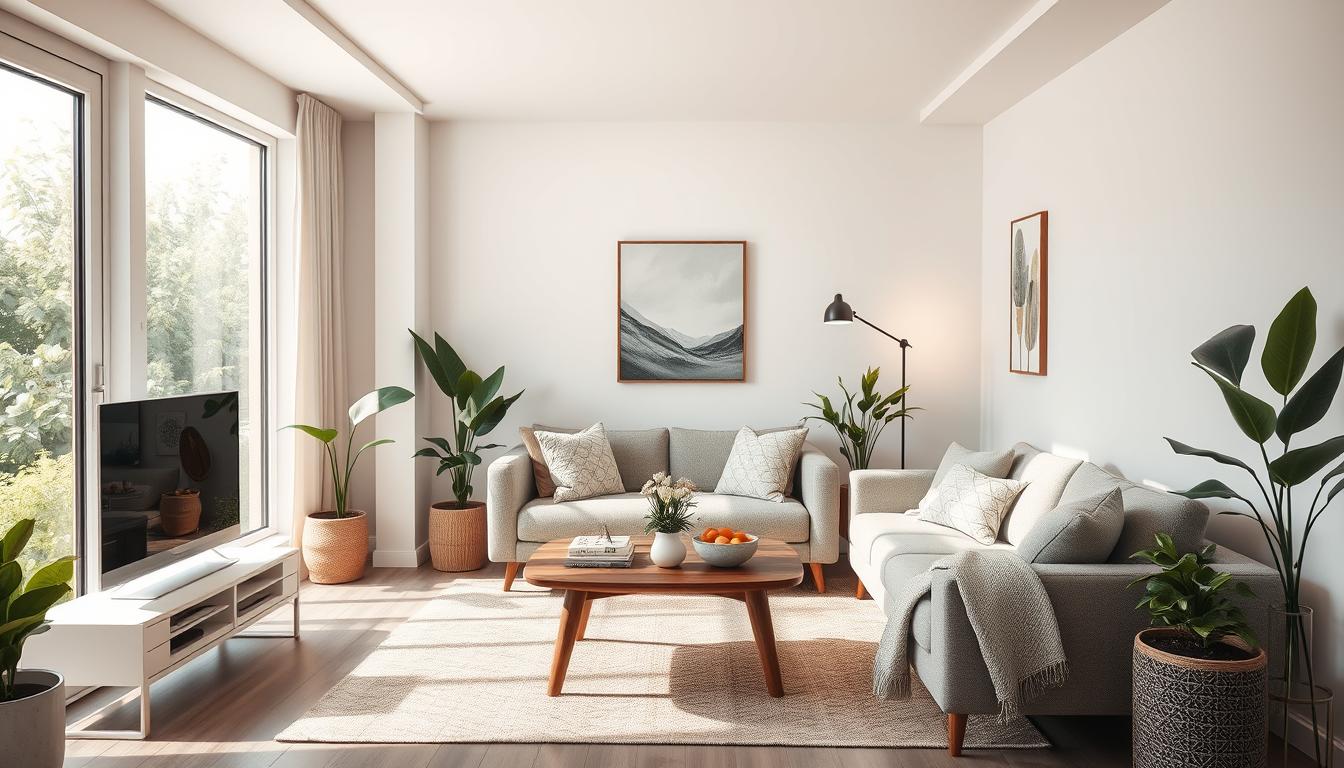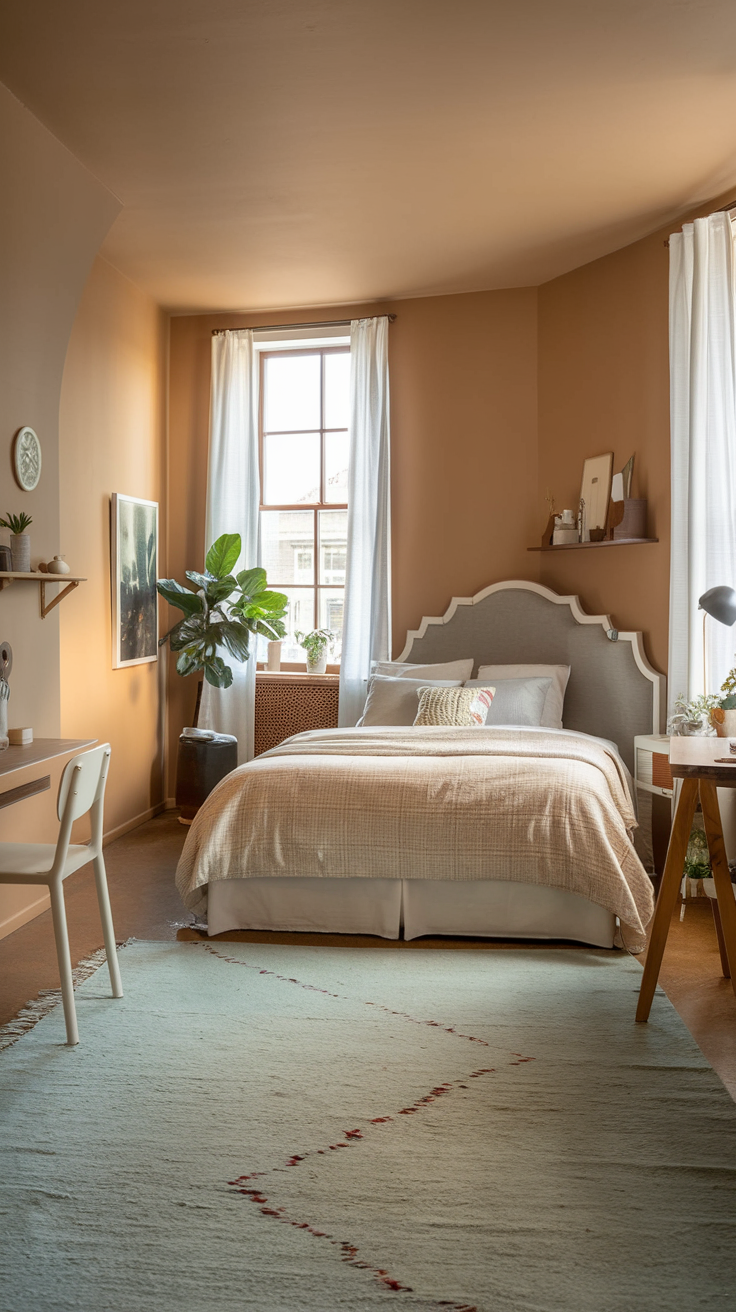Living in a small house or apartment can be tough. It’s hard to make a cozy and stylish living room in a tiny space. But, with the right ideas, it’s possible to create a room that feels big and open.
In this article, I’ll share my tips for designing a small living room. I’ll focus on how to use every inch of space wisely.
Key Takeaways
- Understand the common space constraints in modern homes and how they impact daily living
- Discover essential principles for small house interior design living rooms
- Learn strategic furniture selection and placement techniques for compact spaces
- Maximize natural light and create the illusion of visual space
- Leverage color psychology and smart storage solutions to enhance the room’s functionality
Understanding the Challenges of Limited Living Room Space
As a homeowner or renter, I’ve faced common space issues in modern homes. The size of our living rooms greatly affects our daily lives. By knowing these challenges, we can find ways to make the most of our small spaces.
Common Space Constraints in Modern Homes
Many homes have limited square footage, odd layouts, and irregular shapes. Finding room for storage, seating, and activities in a small living room is tough. These issues make it hard to create a cozy and nice-looking space.
Impact of Room Size on Daily Living
The size of our living rooms changes how we use and move around in them. In small spaces, even simple tasks like hosting guests or relaxing can be hard. Not enough room can make our living areas cluttered, uncomfortable, and stressful.
Identifying Your Space’s Potential
- Carefully examine the dimensions and layout of your living room.
- Analyze how you currently use the space and identify areas for improvement.
- Visualize creative ways to maximize the functionality and visual appeal of your compact living room.
By understanding the unique space constraints, room functionality, and spatial analysis of your living room, you can unlock its full potential. This way, you can create a welcoming and harmonious atmosphere, even with limited square footage.
Small House Interior Design Living Rooms: Essential Principles
Designing a small living room comes with its own set of challenges. But, by understanding key design principles and using space-saving techniques, we can make even tiny spaces welcoming and useful. Let’s look at the main principles for making the most of your small living room.
Design Fundamentals for Compact Spaces
In small living rooms, it’s all about creating a cohesive and visually pleasing space. Stick to the design fundamentals of scale, proportion, and balance. This ensures your furniture, decor, and layout work well together. Use space-saving techniques like multipurpose furniture and smart organization to make the most of every inch.
- Use mirrors, light colors, and smart furniture placement to create a sense of visual expansion.
- Choose multi-functional pieces like ottomans with hidden storage or sleek, low-profile sofas.
- Keep your layout simple and your traffic flow open to make the room feel larger and easier to move around in.
Maximizing Perception of Space
In small living rooms, how the space feels is just as important as its size. Use clever design tricks to make the room seem bigger. By combining space-saving techniques with visual expansion strategies, you can turn your small living room into a beautiful and functional space.
| Design Principle | Technique | Impact |
|---|---|---|
| Scale and Proportion | Choose furniture and decor that’s the right size | Keeps the room balanced and open |
| Lighting | Use layered lighting, including task and ambient lighting | Makes the room feel bigger and adds warmth |
| Color and Texture | Use light, airy colors and textures to make the room feel bigger | Helps create the illusion of a larger, more open space |
By following these essential design principles and techniques, you can turn your small living room into a beautiful and functional space. With the right approach, even the smallest rooms can become cozy and inviting places for your daily life.
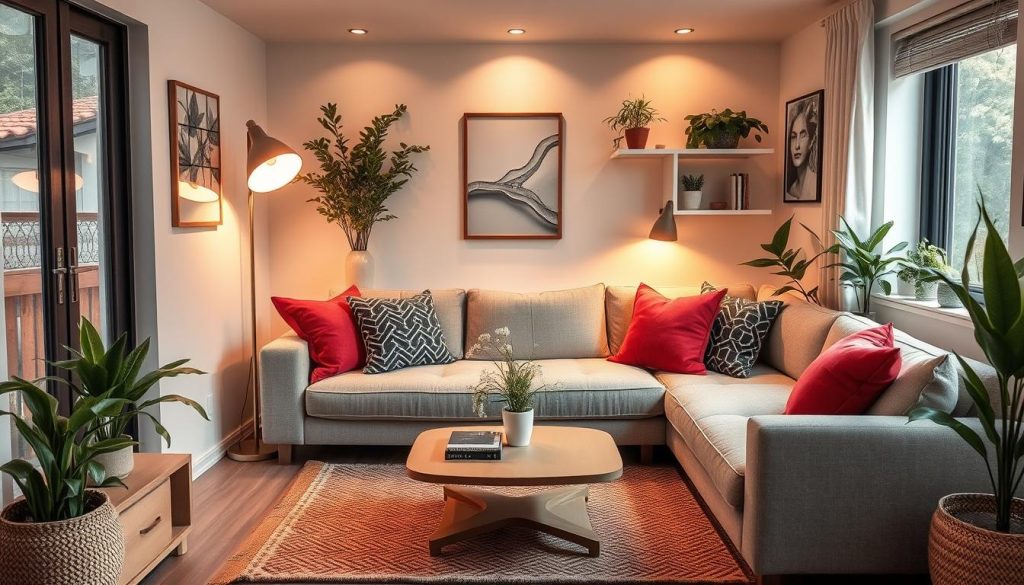
Strategic Furniture Selection and Placement
Designing a small living room is a fun challenge. It’s all about using every inch of space wisely. Choosing the right furniture and placing it smartly can turn a small room into a cozy spot.
Multi-functional Furniture Solutions
In small rooms, furniture must be useful. Look for space-saving furniture like ottomans with storage or coffee tables with shelves. These pieces help keep your room tidy and serve your needs.
Scale and Proportion Guidelines
Size matters in proportional design. Choose furniture that fits your room well. Avoid big pieces that make the room feel cramped. Make sure the furniture looks good together in your room layout.
Traffic Flow Optimization
Good movement in your room is key. Arrange furniture for easy walking. Don’t block paths with big pieces. This keeps your room feeling open and comfy.
| Furniture Type | Recommended Size | Placement Tips |
|---|---|---|
| Sofa | 78-84 inches wide | Place against a wall or in the corner to maximize floor space |
| Armchair | 28-32 inches wide | Arrange in conversational groupings or tuck into corners |
| Coffee Table | 36-48 inches wide | Choose a round or oval shape to improve traffic flow |
With smart furniture choices and placement, your small living room can be both beautiful and practical. It’s all about making the most of your space.
Maximizing Natural Light and Visual Space
In small living rooms, using natural light and making the space feel bigger are key. By using light optimization, mirror placement, and open concept designs, we can make tight spaces feel airy and welcoming.
Mirrors are a simple yet powerful tool. Placing them right can make a room feel larger and brighter. Try out different sizes and spots to see what works best for your room.
Adding shiny surfaces also helps brighten up a room. Use glass coffee tables, shiny decorations, or metallic frames to make your space glow.
Going for an open concept layout can also make a room feel bigger. Removing walls and big furniture makes the space flow better, making it feel more open and inviting.
| Technique | Benefits |
|---|---|
| Light Optimization | Enhances natural illumination, creates a sense of airiness |
| Mirror Placement | Reflects and amplifies natural light, adds depth and visual interest |
| Open Concept | Eliminates physical barriers, promotes a more expansive feel |
By using these easy yet effective tips, you can turn your small living room into a bright, engaging space. It will feel open, airy, and much larger.
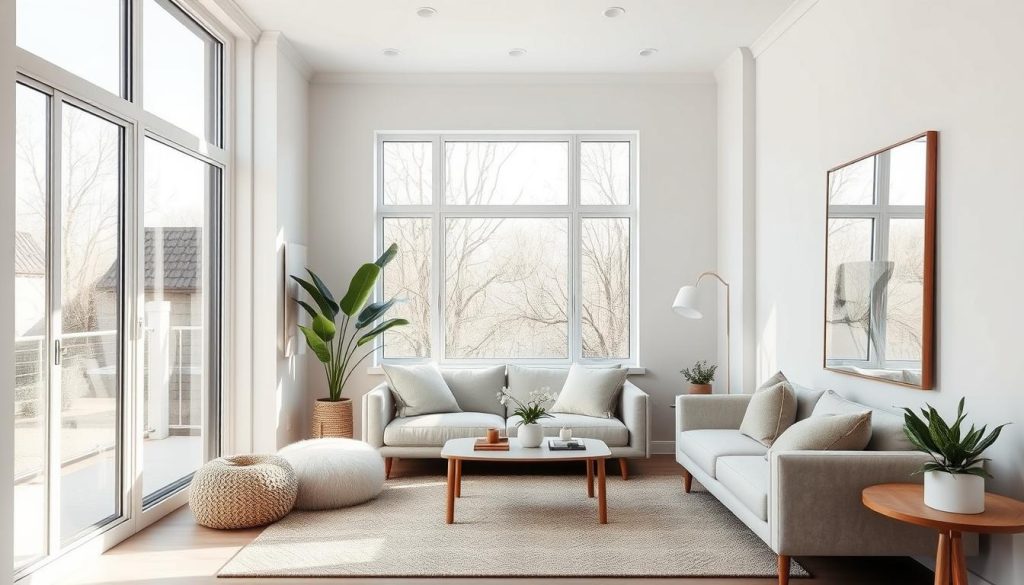
Color Psychology and Space Perception
Color plays a big role in how we see space in small homes. Using color wisely can make a room look deeper and bigger. It can also make the space feel warm and peaceful.
Best Color Schemes for Small Spaces
In small living rooms, light colors are best. Choose soft, muted shades like pale blues, greens, and grays. These colors make a room feel open and airy, without feeling cramped.
Using Paint to Create Depth
Painting techniques can also help make a small room look bigger. Try painting the top walls a lighter color and the bottom darker. This trick makes the room seem taller and wider.
Another idea is to paint vertical stripes. This makes the walls look longer, making the room feel bigger.
Accent Color Strategies
- Use bold, contrasting colors to add interest and highlight certain areas.
- Don’t overdo it with accent colors, as they can overwhelm a small space.
- Use colors in accessories, textiles, or furniture to avoid overwhelming the room.
By understanding color theory and using paint techniques, you can make even the smallest living rooms welcoming and beautiful.
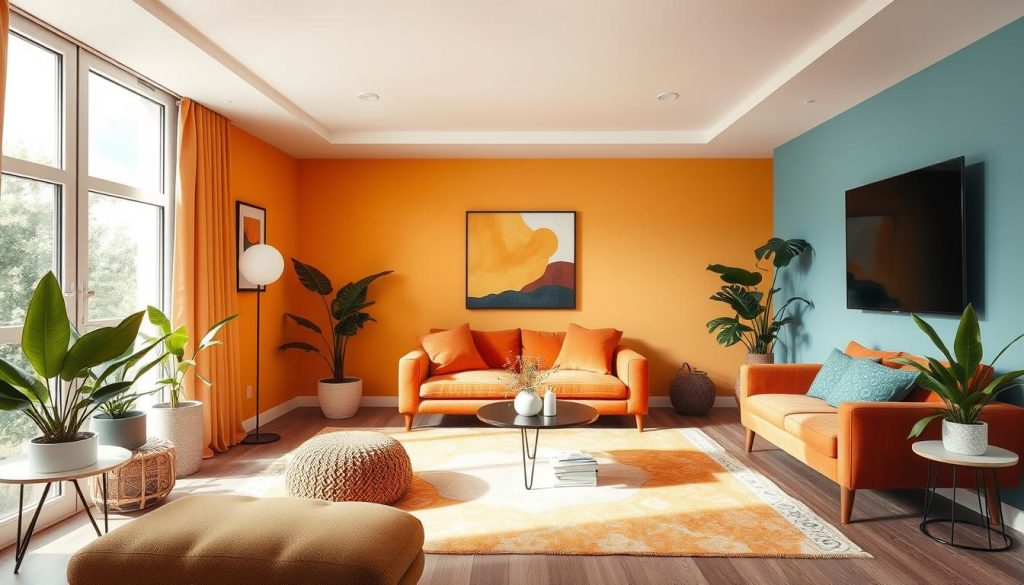
Smart Storage Solutions and Organization
In small living rooms, it’s key to use every inch for storage. This keeps your space tidy and organized. With smart storage and vertical organization, you can turn a small area into a cozy, stylish spot.
Choosing furniture that does double duty is smart. Look for pieces like coffee tables and ottomans with hidden spots for items. Wall shelves and bookcases are great for using up vertical space without taking up floor room.
- Utilize hidden storage in your living room furniture to keep clutter at bay
- Maximize vertical space with wall-mounted shelves and bookcases
- Invest in pieces that serve multiple purposes, like storage ottomans
There are many creative ways to store things beyond just furniture. Think about adding custom built-ins or wall units for your TV and other gadgets. Sliding doors or hidden spots in these can make your space look even cleaner.
| Storage Solution | Benefits |
|---|---|
| Multifunctional Furniture | Combines storage and functionality in a single piece |
| Wall-Mounted Shelves | Maximizes vertical organization to free up floor space |
| Built-In Cabinetry | Provides custom hidden storage tailored to your needs |
By using these smart storage ideas, your small living room can be both neat and welcoming. It will feel open and inviting, perfect for relaxing.
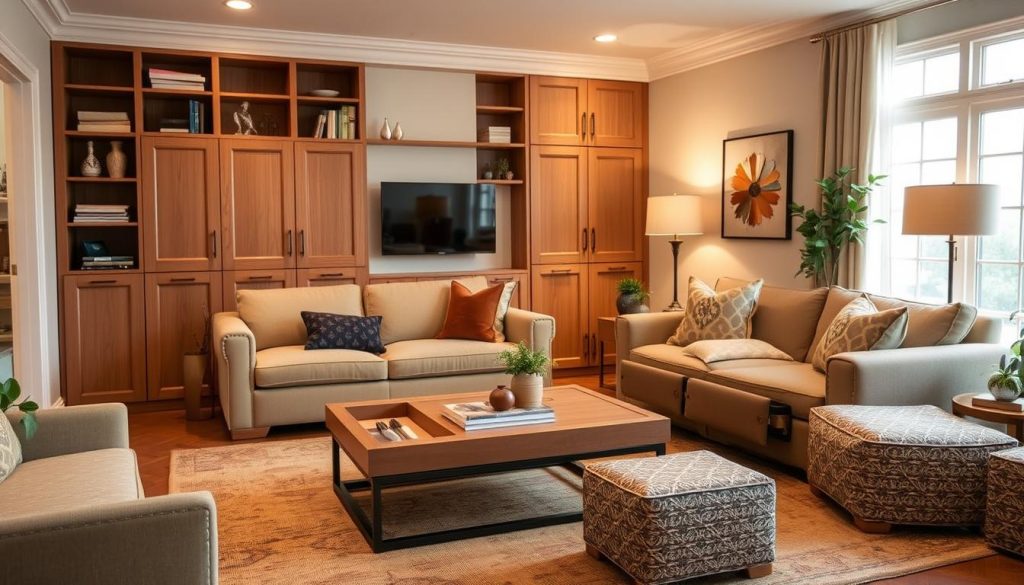
Lighting Design Techniques for Compact Spaces
Working with small living room spaces? The right lighting can make a big difference. Use ambient, task, and space-enhancing lights to turn a cozy spot into a warm, functional area.
Layered Lighting Approaches
For a cohesive look, try a layered lighting design. Begin with ambient lighting like ceiling lights or wall sconces for a soft glow. Next, add task lighting, like table or floor lamps, for reading or other tasks. Finally, use space-enhancing fixtures, like mirrors or reflective lights, to make the room feel bigger and brighter.
Best Fixture Choices for Small Rooms
- Choose ambient lighting with slim profiles and clean lines to avoid clutter.
- Go for task lighting that saves space, like wall-mounted sconces or pendant lamps.
- Add space-enhancing fixtures like recessed lighting, track lighting, or mirrored lamps to open up the space.
By layering these lighting techniques and picking the right fixtures, you can make a small living room look great and feel spacious.
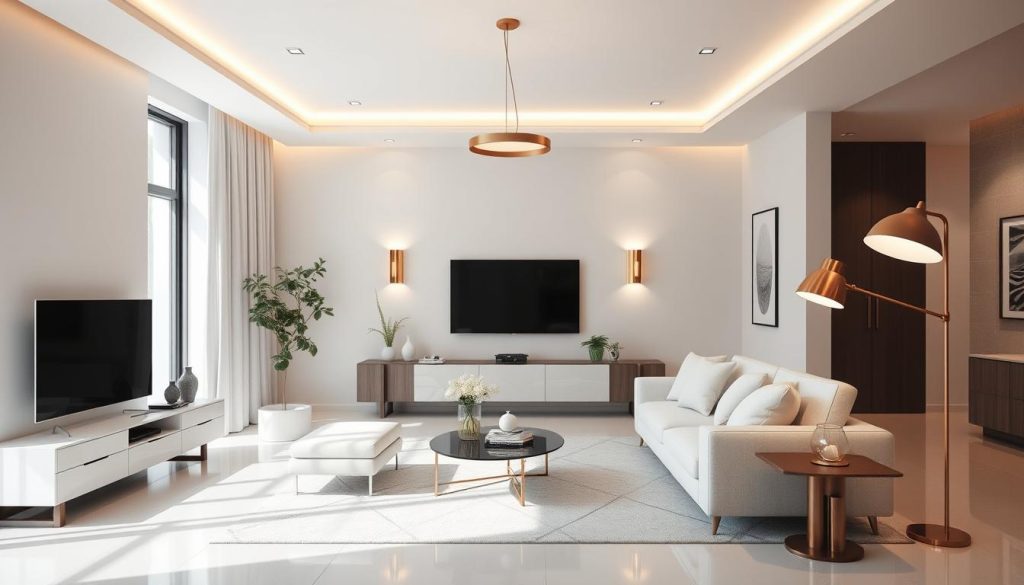
Creating Focal Points in Limited Spaces
In small living rooms, it’s key to make eye-catching focal points. These pieces can make the room feel bigger and more welcoming. But, it’s vital to find the right design balance to avoid overwhelming the space.
Using a big, bold artwork or a striking mirror can make a room’s centerpiece. A unique light fixture, like a pendant or chandelier, can also add visual appeal and function.
Arranging furniture and decor to guide the eye is another smart move. A standout coffee table or a large sectional sofa can draw attention and add visual interest.
Designing a small living room well means balancing a focal point with the room’s overall design balance. With careful selection and placement of statement pieces, even the smallest room can become stylish and inviting.
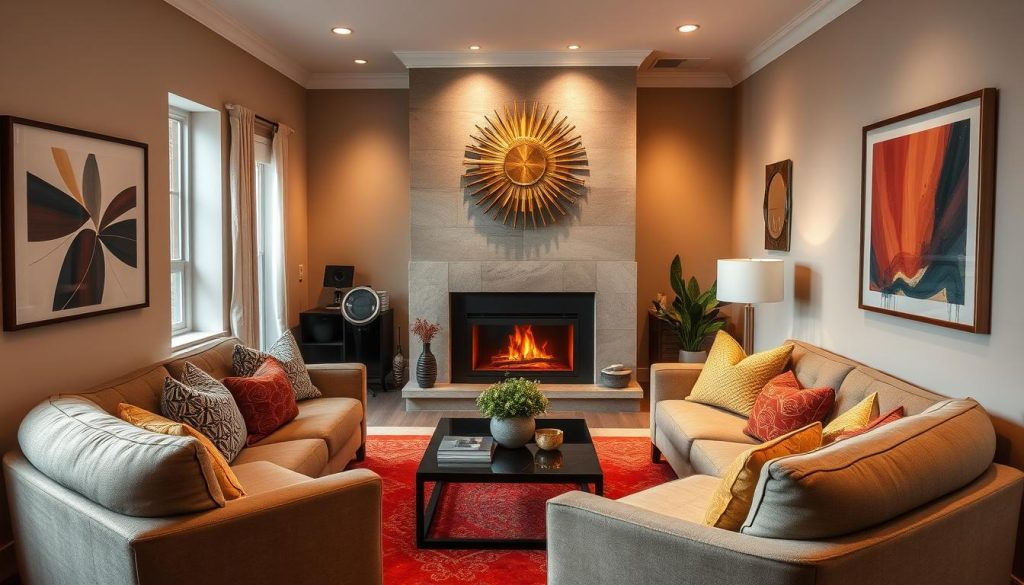
“The true beauty of a room lies in the balance of its elements, where each piece complements the next and creates a harmonious whole.”
Window Treatments and Wall Decor Strategies
In small living rooms, the right window treatments and wall decor can make a big difference. They can make the room look bigger and more open. Let’s look at some ways to use window solutions and art placement to make your small living room look better.
Space-Enhancing Window Solutions
Curtain tricks can change a small space. Choose lightweight, sheer fabrics to let natural light in. This makes the room feel deeper and airier.
Hang curtains high and wide, beyond the window frame. This trick makes windows look bigger. Also, pick single panels or streamlined curtains instead of heavy drapes. They don’t make the room feel closed off.
Art Placement for Small Rooms
Wall art is powerful in small living rooms. Place your art to make the room look taller and more interesting. Use vertical artwork or group small pieces for a gallery wall.
This clever use of art can change how the room looks. Try different setups to find the best one for your space.
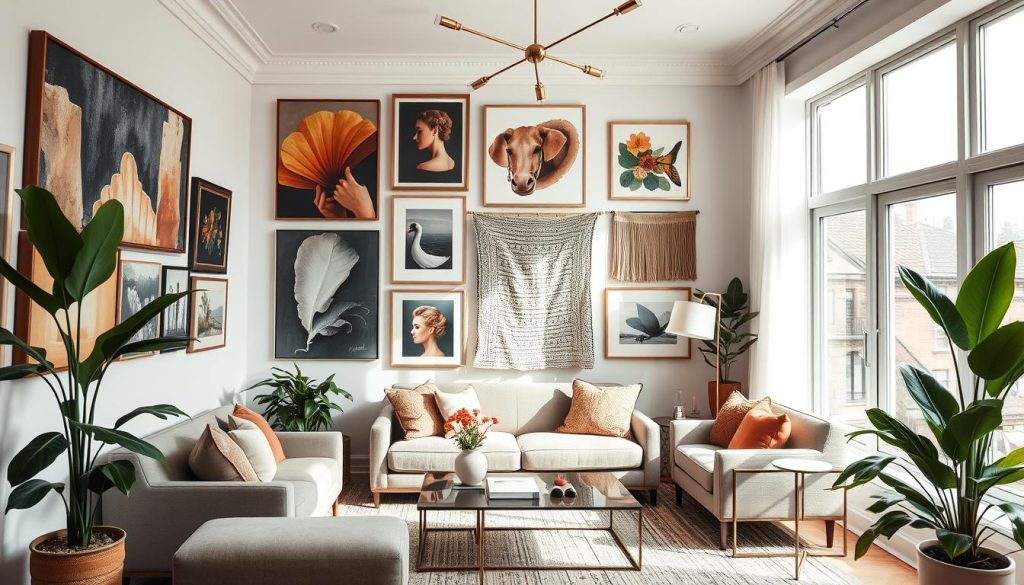
By choosing the right window treatments and wall decor, you can make your small living room look bigger and more appealing. Remember, clever tricks and strategic placement are key to making the most of your space.
Conclusion
Creating a stylish and functional small house interior design living room is possible, even with limited space. By using multi-functional furniture, strategic lighting, and thoughtful color schemes, you can make your small space look great and feel cozy.
The secret to successful small space living is to make the most of your room’s potential. Use compact room design solutions that are both beautiful and practical. This way, you can create a space that shows off your style and meets your needs.
With the right approach, you can turn your small living room into a remarkable home. Remember, size doesn’t matter when it comes to achieving your interior design dreams. So, get creative and make your compact space a cozy oasis.

